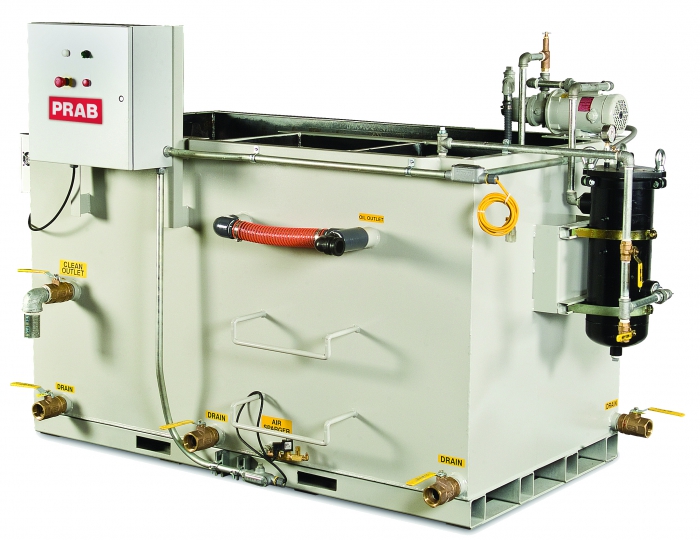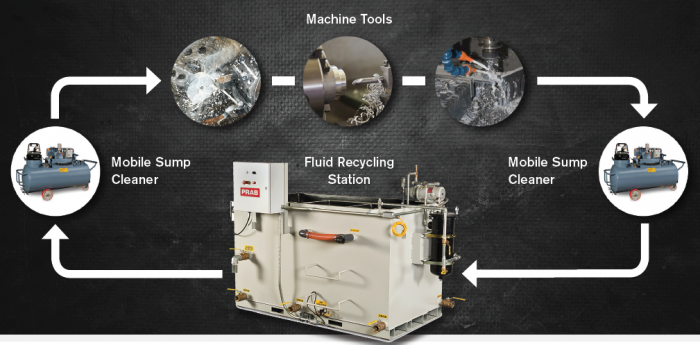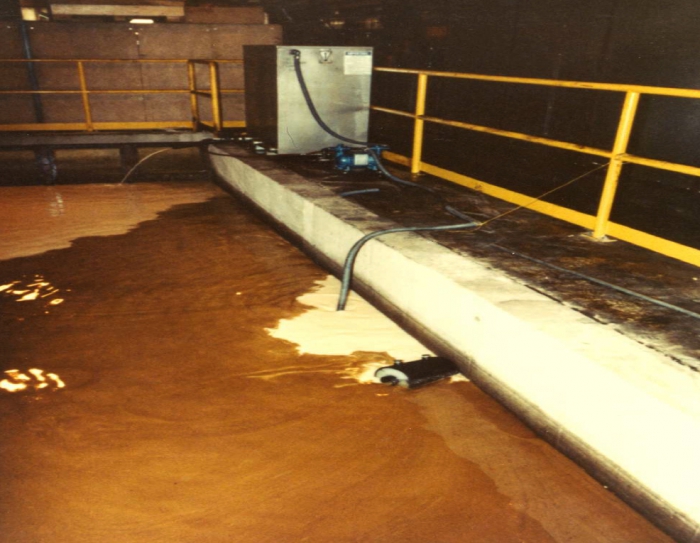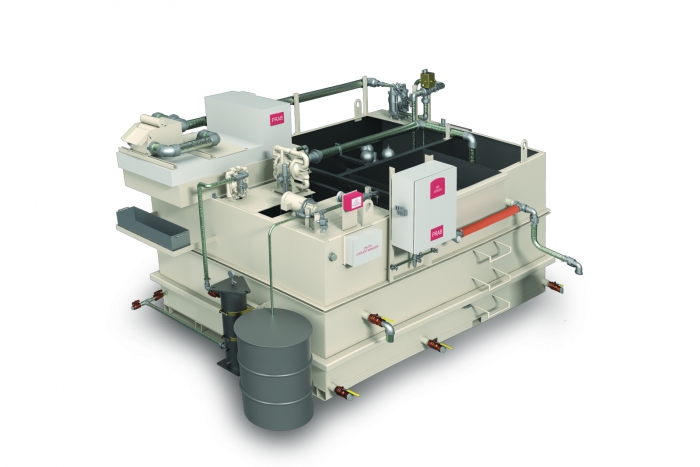Re-evaluating processes and implementing new technology have become strategic pillars in the growth plans of a large number of North American companies. As a result, the willingness to embrace innovation and the ability to find efficiency are critical components to achieving success as costs continue to rise across the board.
According to its website, the World Bank is forecasting higher prices in 2018 for industrial commodities. These are the building blocks for millions of products and infrastructure, principally energy and metals. Forecasts also call for increased demand, which will put additional stress on companies to elevate production.
The cost of raw materials for manufacturing was up 3.9 percent from 2016-2017. Prices are projected to climb another 1.5 percent in 2018. That’s a 5.4 percent increase in raw material costs in less than 2 years. Prices for metals are projected to jump 16 percent this year due to strong demand, and Statista.com predicts raw materials and manufacturing costs will continue to rise through 2021.

Photos courtesy of PRAB
All of these factors create challenges for manufacturing operations trying to maintain profit margins while attempting to increase production. For many sectors – especially those unwilling or unable to innovate or expand to increase efficiency and productivity – growth has been slow over the last few years. During these periods, productivity gains are paramount.
How can industrial manufacturers best serve themselves and their customers? By utilizing equipment and tools that improve operational efficiency, cost and performance. To do so, they must be more aggressive and deliberate in their investments. They must constantly look for ways to enhance production levels, inventory, capacity availability and quality levels.

The Path to Maximizing Value
These monumental demands for increased production levels and efficiency, coupled with increasing costs, can put a strain on a company’s bottom line. Getting value for every dollar spent is essential to having a chance to grow production levels and ensure acceptable levels of profitability. For metalworking and machining operations, an important first step toward achieving this goal is embracing innovation – especially as it applies to recycling materials from an existing process.
These operations rely on large quantities of quality coolant to beat the heat generated by high-speed tools working with raw materials. A mix of concentrate and water, coolant creates lubricity and assists with lowering the temperature of the contact point between the tool and metal surface. Coolant also serves as a flush, moving material fragments generated in the process away from the tool.
The quality of the coolant plays a critical role in a safe and efficient machining process.
Because coolant directly impacts the level of heat at the contact point, it is essential to minimizing wear and tear on expensive tools. Used coolant can contain material fragments, bacteria and residual tramp oil deposits, making it less effective in providing lubricity and heat removal. This can lead to unnecessary tool degradation, premature tool failure and additional operating expense.

The Hazards of Used Coolant
While the vast majority of any coolant mixture is water, the concentrate is expensive and can pose a serious health hazard. Sometimes old coolant is returned to the manufacturing process in an attempt to generate value by reusing the costly concentrate. However, once coolant has been used, the quality is compromised and the mix proportion can be incorrect. Over time, it will lose the properties that make it effective in controlling heat and lubricity.
Not only is coolant expensive to replace, it must be properly disposed of when it has exceeded its useful life. Noncompliance with local, state and federal regulations for coolant disposal can result in costly fines or even the complete shutdown of an operation.
Used coolant, as well as the metal shards and tramp oil contained within it, must be filtered, separated and stored for disposal. This process, as well as the actual disposal by a third party, can be a monthly service that comes with a high price – in dollars and the amount of valuable shop space required for storage.
While it is an essential part of a metalworking operation, coolant poses challenges for employees working around it. Used coolant in storage often generates a rancid odor as bacteria contained within the contaminated fluid grows. This must be treated with expensive biocides to control the foul stench. Employees who handle the used coolant at any point during the manufacturing, maintenance, or disposal processes are vulnerable to skin irritation that can occur when rancid coolant comes in contact with exposed skin. In either case, employee morale and overall productivity can certainly be compromised by an uncomfortable or unsafe working environment.

Innovative Recycling Has Its Advantages
The key to protecting the environment while improving profits, tool life and workplace safety lies in the adoption of a coolant recycling system. Whether an operation uses a centrifuge-style unit or a more modern system, it is better to recycle coolant than to deal with contaminated fluids and monthly costs from disposal cycles.
The more metalworking coolants can be clarified, the less waste will need to be hauled away. While centrifuges are effective, innovative systems are readily available today that require far less maintenance, resulting in lower costs, minimal downtime and reduced employee contact with hazardous coolant. This is the ideal solution for finding optimal value when using water-based coolants in a metalworking process.
Coolant recycling systems offer several valuable benefits, including:
- Reducing waste disposal costs up to 90 percent and the need to buy new coolant up to 75 percent.
- Versatile fluid collection points that facilitate removing tramp oil contamination and suspended solids from coolant, controlling bacteria and adjusting for optimal fluid concentrations.
- Enhanced coolant monitoring and management, which increases potential savings and addresses many coolant challenges facing metalworking operations.
- Removal of free floating and mechanically dispersed tramp oils up to 1/10 percent or less.
- Eliminating suspended solids so separated tramp oils can be sold or recycled as an additional efficiency that can bolster the bottom line.
- Providing recycled coolant that contains the ideal mixture of water and concentrate to maintain quality control over the metalworking operation while providing between 25 percent and 209 percent tool life improvement.
By reducing material handling and maintenance concerns, it is easier to achieve ISO 14001 environmental compliance, which helps organizations identify, manage, monitor and control their environmental issues in a holistic manner (ISO 14001 Environmental Management, 2015). To be considered ISO 14001 compliant, companies need to consider all environmental issues like air pollution, resource use and waste management.
Adopting a modern coolant recycling system is an easy decision to make when you look at all the data and facts, and also consider the benefits their innovative features can bring to a metalworking operation. From a safer working environment, resulting in more comfortable employees who deliver higher production, to extraordinarily enhanced tool life and a rapid ROI, the advantages of recycling coolant with a modern system are far-reaching.
The costs associated with waste management will continue to be a concern in the foreseeable future, as the consequences of noncompliance with environmental regulations has manufacturers looking for new ways to save money while remaining environmentally sustainable. They can mitigate these costs by aligning with an experienced equipment provider that can assess their specific needs and offer the most effective, innovative and profitable solution for reclaiming and recycling valuable fluids.
Related Glossary Terms
- coolant
coolant
Fluid that reduces temperature buildup at the tool/workpiece interface during machining. Normally takes the form of a liquid such as soluble or chemical mixtures (semisynthetic, synthetic) but can be pressurized air or other gas. Because of water’s ability to absorb great quantities of heat, it is widely used as a coolant and vehicle for various cutting compounds, with the water-to-compound ratio varying with the machining task. See cutting fluid; semisynthetic cutting fluid; soluble-oil cutting fluid; synthetic cutting fluid.
- lubricity
lubricity
Measure of the relative efficiency with which a cutting fluid or lubricant reduces friction between surfaces.
- metalworking
metalworking
Any manufacturing process in which metal is processed or machined such that the workpiece is given a new shape. Broadly defined, the term includes processes such as design and layout, heat-treating, material handling and inspection.
- quality assurance ( quality control)
quality assurance ( quality control)
Terms denoting a formal program for monitoring product quality. The denotations are the same, but QC typically connotes a more traditional postmachining inspection system, while QA implies a more comprehensive approach, with emphasis on “total quality,” broad quality principles, statistical process control and other statistical methods.
- tramp oil
tramp oil
Oil that is present in a metalworking fluid mix that is not from the product concentrate. The usual sources are machine tool lubrication system leaks.

